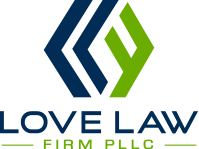
Intellectual property is worth its weight in gold for any entity—especially so for small businesses. Properly handling intangible corporate assets such as trademarks, copyrights, trade secrets and patents can go a long way in propelling smaller, local organizations towards increased global recognition and the spike in revenue and brand awareness associated with it. By creating and safeguarding their best-in-class technologies and services, they can stake a claim at the forefront of their given industry, thereby garnering a devoted client base and sustainable profitability that can then be scaled as the company continues to expand.
This matter is particularly essential for small organizations that are significantly reliant on intellectual property for the majority of their income. However, this innovation accounts for only a percentage of the equation in terms of consistent growth and earnings. In the exponentially increasing digitalized marketplace, it is almost just as important for small companies to proactively protect their intangible assets—to include both innovative concepts in development as well as proprietary data that makes the organization competitive within its peer group. Here’s an overview of how you can successfully implement protective measures into your workplace to protect your intellectual property. Read below to learn more from intellectual property lawyer Francine E. Love.
Obtain Patents & Trademarks To Protect Your Small Business' Intangible Assets
A patent is essentially an exclusive right to commercialize or license an invention or concept. To acquire a patent registration, your idea must meet certain prerequisites, including that it is new, inventive and useful. Note that if you have already gone public with your invention, it may not be deemed new and thus you may not be able to obtain a patent for it. A common misconception is that a patent is reserved for inventors of unique, cutting-edge gadgets. The truth is that many businesses can profit from acquiring patents, and not just those involved in manufacturing or technology industries. The United States Patent Office (USPTO) has made is explicitly clear that patents are intended to protect a wide array of innovations—even that those merely serve to improve on existing inventions as long as the new addition is novel and non-obvious.
Applying for patents is generally a straight-forward process, however the materials required to successfully do so can be complex and challenging to compile—especially if the new idea is complicated. In these instances, it may be useful to consult with a patent attorney to assist with the patent filing process, the majority of which can be accessed online via the USPTO website.
There are three general categories of patents:
- Design: Protects ornamental/physical characteristics of your work product
- Utility: Covers machines, manufactured products, processes and new compositions. This is the most common type of patent applied for by corporations—with the USPTO reporting that Utility patents account for 90% of all patent requests
- Plant: Used in instances for a distinct, discovered, or invented asexually-reproduced plant including hybrids, seedlings and mutants
Trademarks are arguably the most universally important to businesses, even though many small entities fail to take advantage of the protections they provide. A trademark is a source identifier such as a brand, name or logo. In order to obtain trademark protection, the main component is usage. There are two main methods to assert trademark protection. The ‘’ symbol is used to claim an unregistered or common law trademark that is based on your active, continued use of the distinctive image or name. This is the simplest way to apply intellectual property protection to these type of work products, but it only entails a limited scope of protection. The alternative method is to actually register your mark with the USPTO—which offers increased protective measures and makes it easier for your business to assert your rights in the event you are forced to take legal action.
Manage Employees In New York And Protect Your Intellectual Property
Protecting your intellectual property has a lot to do with sound human resources management. One of the single most effective legal measures you can use to protect your intellectual property is a non-disclosure agreement or “NDA.” An NDA is a contractual agreement that ensures sensitive and proprietary details are kept confidential. The NDA should contain, at a minimum, the following information:
- The parties who have access to the privileged information
- An explicit description of what information is to be kept confidential
- The term of the relationship and how long the information is to be kept confidential
- Descriptions of what constitutes permissible and impermissible usage of the information
For emergent startups and small businesses in the early stages of developing a new product or service, it is important to understand that you may need to implement NDAs with not only your employees but also close collaborators and early investors. When NDAs are not effectively utilized, companies may find themselves in the less-than-enviable situation of having a competitor discover what makes the business successful and use that information against them or terminate a potentially lucrative deal.
Monitor Brand Usage To Protect Your Intellectual Property And Build A Positive Business Image
Not all small businesses have the resources or time to adequately police their rights like major international corporations like Google—who are somewhat notorious for their overly-aggressive cease-and-desist enforcement protocol. However, not all small businesses may need such an aggressive posture when it comes to protecting their IP rights. For example, if you posted an image on your website—an image which you have obtained copyright or trademark protection from—and a blogger reposts it without your permission, immediately threatening them with legal action is most likely not going to be your initial response. You may alternatively reach out to the blogger and notify them of the violation and request that they provide the source they got it from on their site. If the violation occurred on social media platforms, you could also ensure that you are aware of their terms of use and pursue a resolution in line with this guidance. Still, threatening retribution may not be the most productive approach. For instance, if the blogger mentions your company in a positive manner when using the image, it is effectively a form of free advertisement, despite the fact that he technically violated your rights. Consider both your brand and image when monitoring your brand usage and respond accordingly.
To learn more from an intellectual property attorney about your New York small business, please check out these articles:
Or check out this video about protecting your intellectual property.
Francine E. Love is the Founder & Managing Attorney at LOVE LAW FIRM, PLLC which dedicates its practice to serving entrepreneurs, startups and small businesses. The opinions expressed are those of the author. This article is for general information purposes and is not intended to be and should not be taken as legal advice.





